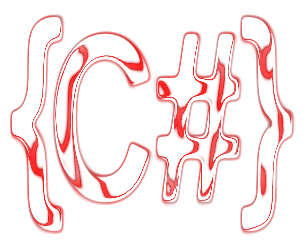| Deep C# - Delegates |
| Written by Mike James | |||||
| Monday, 02 June 2025 | |||||
Page 3 of 4
Delegate PatternsWhy would you use a delegate rather than just calling a method? The answer, explained in the introduction, is simply that a delegate can be passed as a parameter to another method, so determining what method is called at run time. More widely a delegate can be used anywhere an object can, which means you can have references to a delegate and data structures of delegates such as arrays. In functional programming terms, a delegate converts a method or a function into a "first-class object" i.e. one that can be used like any other object. There are two well-known patterns that demand the use of a delegate. The first is the “callback” or notification method which is supplied to an object for it to call with intermediate or final results of its working. Of course, in this instance the object is usually run on a separate thread and the method provides some asynchronous communication between the caller and the called thread. The second is event handling. A delegate can be set up within an object so that clients can provide a method to be called when an event occurs. If you think carefully you will see that there is little difference between the callback and the event pattern. In both cases a delegate is called when some condition occurs – a buffer is full, the user has clicked a button, an error condition has been detected etc. However, while events are based on delegates they add an additional structure, an add and remove accessor similar to a property. A third, slightly less common, pattern involves creating a new thread of execution. Signatures and MethodsAt this point it is worth making clear that the delegate’s signature always determines how the method that the delegate wraps is called. That is, you always have to invoke the delegate with the parameter types specified and the delegate always returns the type specified. However, it is possible to create instances of the delegate that encapsulate methods that don’t have exactly the specified signature. To summarize: A delegate type’s signature specifies how the delegate is invoked – i.e. the parameters and return type are always given by the delegate’s signature. A delegate type’s signature specifies what sort of methods an instance of the type can encapsulate. Notice that the encapsulated method can be a static or an instance method. That is, the method can belong to an instance of the class or it can be a static "class method". The delegate's
Covariance and Contravariance RevisitedIn the simplest case a method’s signature and return type have to match the signature of the delegate type that encapsulates it. However, there is more flexibility in how a method signature can match a delegate type signature. In the documentation this is called covariance and contravariance, just to make is sound more sophisticated. We have already met this idea twice before, in chapters 8 and 10, but it worth seeing how it works for delegates. Put simply covariance allows the method to return a sub-class or derived type of the return type defined in the delegate. Assume for the moment that
If you now define the delegate type:
then clearly a method returning
So the delegate type can encapsulate a method that returns a
Contravariance allows the method to have parameters that are base types of the types specified in the delegate that encapsulates it. That is, if you define the delegate type as before:
then a method that that has a parameter that is a base class for
is perfectly acceptable. Once again, you can only invoke the delegate by passing a
but this all works because the method that the delegate invokes can treat this as a more primitive type, i.e. as a |
|||||
| Last Updated ( Monday, 02 June 2025 ) |
